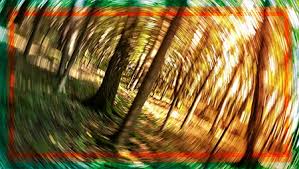The objective of this article is to identify the effects and dangers of the drugs that are hallucinogens.
By: Susan Adams, M. Ed.
Hallucinogens & It's Effects
 Angel dust(PCP), acid, and other mind altering drugs affect perception, thinking and emotion. They can cause delusions and distortions and are very dangerous. Tis article provides a detailed description of their effects and dangers.
Angel dust(PCP), acid, and other mind altering drugs affect perception, thinking and emotion. They can cause delusions and distortions and are very dangerous. Tis article provides a detailed description of their effects and dangers.
Angel dust is Phencyclidine (pcp) and was developed as an anesthesia now restricted to use with animals because of its side effects in humans. These are delirium, extreme excitement, and visual disturbances.
The drug, psp, is sold on the street in powdered form (angel dust), as tablets, as crystals, or in pills ("hog", peace pills", "wack"). Almost all psp is illicitly produced in bootleg labs. The powder is smoked in a mixture with marijuana, parsley, and mint leaves or in cigarettes made of mint leaves, or in little cigars dipped in pcp solution.
Low doses of pcp lead to a floating, euphoric high, with numbness possible. Higher doses bring on excitement, confusion, with muscles rigidity, loss of concentration and memory, visual disturbances, delirium, feelings of isolation, and speech impairment. Even higher doses mean convulsions, violent behavior, fear of death, changes in perception of the body, and at worst, a psychosis very much like schizophrenia, with violent paranoid fear of everyone, including anyone treating the individual for these effects. A person at this stage, which may last for days or weeks, is extremely strong and dangerous to himself or herself and others. Higher doses still may result in death.
Violent psp intoxication can make an ordinarily quiet person into a killer--either of themselves or others. Drownings, burnings, falls and automobile accidents related to pcp have brought more deaths and injuries than any direct damage by the drug itself. Recurring schizophrenic attacks have been seen in treated users. The drug is difficult to counteract or remove from the body and remains present for long periods of time.
Acid is another hallucinogen. It was originally made as a derivative from the wheat and rye fungus ergot and named d-lysergic acid diethylamide; now it can be made synthetically.
It is so powerful that one ounce of liquid can provide 300,000 average doses. It is not physically addicting, does not create tolerance, and does not create withdrawal symptoms.
Acid can be taken in pill or tablet form. A drop can be added to a sugar cube, cookie, or the like, or licked off of something like a stamp. Almost all LSD is illicitly manufactured and may contain impurities that are dangerous.
A "trip" may last eight to ten hours. The "trip" consists of physical and mental reactions which include dilated pupils, elevated temperature, faster heartbeat, as well as increased blood pressure and possible tremors. A small dose causes changes in sensations: in vision, depth perception, color perception, time sense, hearing (music is "seen" and colors are "heard").
Depending on the personality of the user and conditions during use, higher doses may lead to illusions and hallucinations. There may be extreme changes in the individual's sense of self and time, great alterations in emotions and state of consciousness. A mystical or religious experience may occur to the mind transported out of all ordinary bodily restraints.
There are extreme dangers
Panic reactions may overwhelm the pleasant sensations with fear of insanity arising out of the bizarre effects. Extreme paranoia may occur during and for some time after the other effects wear off. The lofty illusion of creativity and invincibility may lead to accidents, sometimes fatal, as in attempts to fly from a high place or to ignore speeding traffic.
"Flashback" recurrence of the experience days or months later, especially if unexpected, may create panic fear of insanity. Long -term effects may include mental breakdown in an individual who is already emotionally disturbed, or recurring anxiety and depression. Slang for this drug include words like acid head and hawk, referring to users.
There are other hallucinogens
Again, this class of drugs affects perception, sensation, thinking, self-awareness, and emotion. Along with delusions and distortions of time and space, these drugs may create hallucinations. many are now used, some of them derived from ancient natural substances such as mescaline, from the peyote cactus,; psilocybin, from the psilocybe mushroom; morning glory seeds; jimsonweed ("Jamestown weed," "loco weed", "thornapple", "devil's apple") and others. Along with LSD, the synthetic hallucinogens, some of which are found in nature, include DMT (dimethyltryptamine), DOM (also called STP). PMA, MDA, and others.
